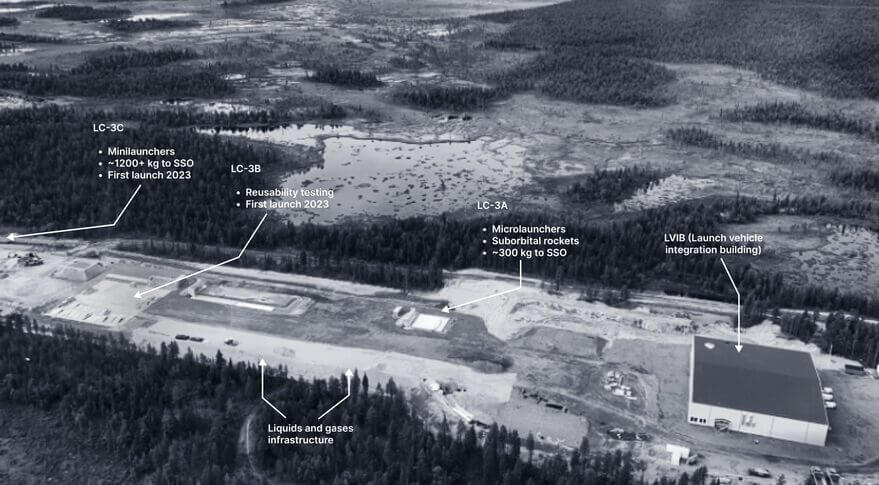
Sweden opens orbital launch site looking for users (Image Credit: Space News)
WASHINGTON — Swedish and European officials inaugurated what they called mainland Europe’s first orbital launch site Jan. 13, but it’s unclear who will launch from the facility and when.
During a brief ceremony at the Esrange Space Center in northern Sweden attended by the king and the prime minister of Sweden as well as the president of the European Commission, the Swedish Space Corporation (SSC) declared a new orbital launch facility at the site, which has long hosted sounding rocket launches, is ready to accommodate customers.
“With Spaceport Esrange, E.U. gets a strategic asset which provides independent access to space,” said Anna Kinberg Batra, chair of the board of SSC. “This will be instrumental for reaching the E.U. and U.N. sustainability goals as well as strategies within security and defense.”
Those views, particularly the importance of space to European security nearly a year after Russia’s invasion of Ukraine, were echoed by other attendees. “The current geopolitical situation, not least, of course, the Russian invasion of Ukraine, has demonstrated how important it is that the European Union has access to space,” said Swedish Prime Minister Ulf Kristersson.
“It’s a big moment for Europe. It’s a big moment for Europe’s space industry. The first orbital launch site on the European mainland,” said Ursula von der Leyen, president of the European Commission. “This spaceport offers an independent European gateway to space.”
Europe already has independent access to space through the spaceport in French Guiana operated by the French space agency CNES, which hosts Ariane and Vega launches. That spaceport is also renovating a pad to support multiple small launch vehicles.
Officials said little about the orbital launch site itself or prospective users of it. The site features a launch vehicle integration facility and three pads. One pad is for suborbital rockets and “microlaunchers” capable of placing up to 300 kilograms into sun-synchronous orbit (SSO), while a second pad will be used for launcher vehicles that could put up to 1,200 kilograms into SSO. A third pad is reserved for testing of reusable vehicles.
SSC said the first user of the site will be Themis, a reusable launch vehicle demonstrator being developed by ArianeGroup with support from the European Space Agency to test vertical takeoff and landing technologies. Those launches could begin later this year. However, ArianeGroup, in a roadmap of Themis development, said tests at Esrange would be limited to low-altitude “hop” tests going only a few tens of meters high. Future higher-altitude tests would take place in French Guiana.
At the event, officials highlighted the presence of Isar Aerospace, a German company developing the Spectrum small launch vehicle. Isar conducts engine tests at Esrange, but in its own statement the company said it has no plans to conduct orbital launches there. The first launch of Spectrum is scheduled for later this year from Andøya Spaceport in Norway.
Another German launch vehicle developer, Rocket Factory Augsburg (RFA), also performs tests at Esrange. RFA announced Jan. 11 it will conduct the first orbital launch of its RFA One rocket at the end of the year from SaxaVord Spaceport in the Shetland Islands north of Scotland.
RFA noted in its announcement it has exclusive access to one pad at SaxaVord, a multi-user site, with the pad and launch stool that will host the rocket completed at the end of last year. “The RFA launch pad is therefore the first for vertical orbital rocket launches in the UK and mainland Europe,” the company stated.
SSC said in a statement that it expects the first orbital launch from Esrange to take place around the end of the year, but did not disclose who would conduct it. “SSC are in advanced discussions with several potential rocket partners for future orbital launches from Spaceport Esrange,” it stated.








